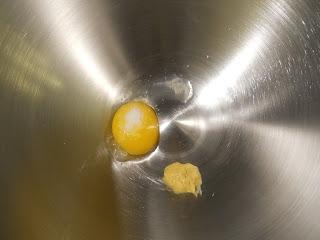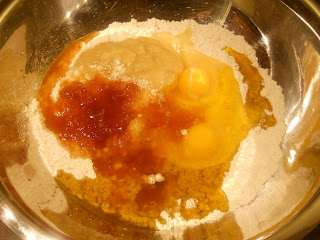It was like I found a box of gold! Technically, I did. For those of you who remember my posting about cactus pears, you will note that different varieties are available. (For my entry on cactus pears, click here).
Once in a while, in the grocery store, I've come across these yellow-green cactus pears and thought that they were too unripe to eat. Little did I know that they were actually the illusive golden prickly pears that I have been searching, for years, to find! These particular ones were from South Africa.
Unlike red cactus pears (the most commonly found variety), these fruit have a somewhat sweeter flavour, with hints of pineapple and banana. I also found that this variety was "pricklier" than other varieties, as I was left with some war wounds. (I'll do anything for a good meal and, yes, it was worth it!)
Another potentially wounding fruit, I was able to capture, is the loquat or nespoli. This orange fruit has the shape of a small pear and the taste of a mixture of apricots, plums and grapes.
This small fruit also has some parts to be aware of. As you can see, the center contains some seeds. Well, more than you think.
This little guy produced eight seeds. It is commonly known that this fruit is thought to contain approximately 30% waste. Another thing to know is that the seeds contain small amounts of cyanide (Life always comes with balance.) Apparently, they are comparable to apricot kernels, which also contain some amount of cyanide. So, some people advise not to consume, chew, or suck on, the seeds.
However, I have seen recipes where loquat seeds are saved and used in culinary purposes to provide a cherry-like flavour. I have seen recipes calling for loquat seeds to be stuffed in chicken and duck, as well as, used to flavour vodka.
Until a recognized case for "death by loquat seed" is found, I'm game for a try!
Once in a while, in the grocery store, I've come across these yellow-green cactus pears and thought that they were too unripe to eat. Little did I know that they were actually the illusive golden prickly pears that I have been searching, for years, to find! These particular ones were from South Africa.
Unlike red cactus pears (the most commonly found variety), these fruit have a somewhat sweeter flavour, with hints of pineapple and banana. I also found that this variety was "pricklier" than other varieties, as I was left with some war wounds. (I'll do anything for a good meal and, yes, it was worth it!)
Another potentially wounding fruit, I was able to capture, is the loquat or nespoli. This orange fruit has the shape of a small pear and the taste of a mixture of apricots, plums and grapes.
This small fruit also has some parts to be aware of. As you can see, the center contains some seeds. Well, more than you think.
This little guy produced eight seeds. It is commonly known that this fruit is thought to contain approximately 30% waste. Another thing to know is that the seeds contain small amounts of cyanide (Life always comes with balance.) Apparently, they are comparable to apricot kernels, which also contain some amount of cyanide. So, some people advise not to consume, chew, or suck on, the seeds.
However, I have seen recipes where loquat seeds are saved and used in culinary purposes to provide a cherry-like flavour. I have seen recipes calling for loquat seeds to be stuffed in chicken and duck, as well as, used to flavour vodka.
Until a recognized case for "death by loquat seed" is found, I'm game for a try!































